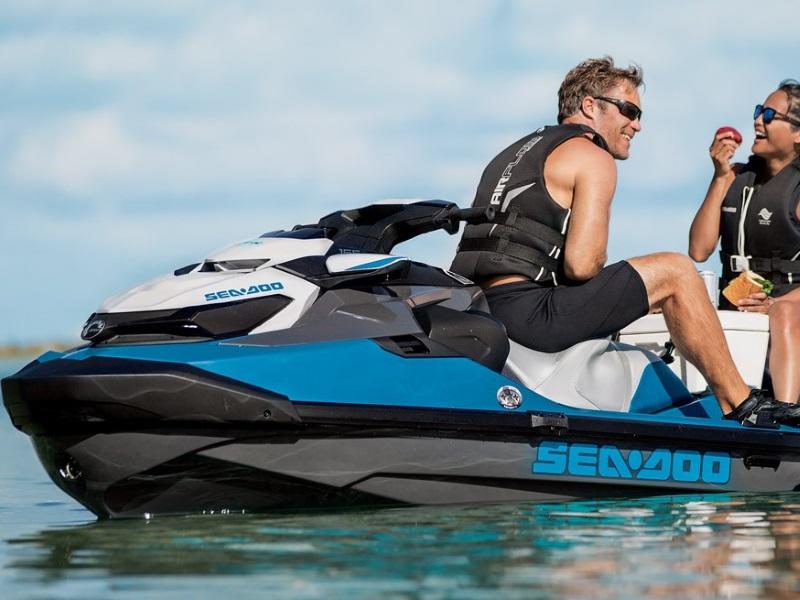Personal watercraft, or PWC, are thrilling vehicles that let you take on the water at high speeds for an afternoon of adrenaline-pumping fun. Whether you’re on a Jet Ski or a Sea Doo PWC, you’re bound to enjoy yourself immensely. If you’re new to the world of riding personal watercraft, though, you might not know the best practices for this particular style of vehicle.
PWC operate something like an aquatic motorcycle, which means that you should start slow and get in plenty of practice before you take on high speeds and attempt sharp turns or fancy maneuvers. At Cross Country Powersports of Metuchen, we know a thing or two about how to ride a PWC, so we’ve created this guide of PWC riding tips to help you become acclimated with your new craft.
While the risk of injury when riding a PWC is lower than that of a motorcycle because you’ll simply land in the water if you fall, there is still a risk. That’s why you should take every precaution you can to protect yourself and your passengers when you’re riding your personal watercraft. You should know how to swim before you ride a personal watercraft since the risk of falling in the water is so high, and you should still wear a life jacket as you ride. Make sure to attach your PWC’s engine kill switch to your wrist or your life jacket so that your watercraft comes to a stop if you fall.
Familiarize yourself with local regulations regarding watercraft and make sure your craft is registered and insured. As you ride, watch out for debris in the water and for obstacles like buoys as well as swimmers in the water, whom you should give a wide berth. Carry a first aid kit, a dewatering device, signal flares and an emergency radio in your craft’s storage compartment along with your phone and charger. If you’re injured, stop the engine and signal for help, then wait for it to arrive. Make sure that you apply waterproof sunscreen and keep yourself well-hydrated, too.
After you get your PWC into the water from the loading ramp, you should pull it into water that’s at least three feet deep before starting it to prevent sand and pebbles from clogging the intake. Start riding very slowly away from the dock at no more than 5-10 mph, giving others their space, and wait until you’re in more open water to speed up. Don’t go over 5 mph in “no wake” zones or in coves. Try to stay 100’ away from other watercraft and 150’ from shore while you’re going at high speeds. Since your PWC lacks brakes, you need plenty of space to slow down after you let go of the throttle when you want to stop.
When turning on a PWC, you need to lean your body weight in the direction of the turn to get your craft to move that way. Slowing down will reduce or stop the jet of water extruded from the rear of your vehicle, which is its power source, so you need to maintain a consistent speed as you turn and rely on your body to steer left and right. If you spy something ahead that you need to avoid, again — don’t slow down! Maintain a constant speed and use your body weight to veer to the left or right as necessary to avoid the other craft or obstacle. This is why it’s so important to look ahead and anticipate the moves you’ll need to make before you need to make them, and also ride more slowly until you’re accustomed to how your PWC handles.

If you haven’t found the personal watercraft of your dreams, visit our showroom to see our vast inventory of new and used PWC in many styles, including Jet Ski® and Sea-Doo models. Cross Country Powersports serves the cities of Newark and New Brunswick with our location in Metuchen, New Jersey.
While great effort is made to ensure the accuracy of the information on this site, errors can occur. Please verify all pricing information with a customer service representative. This is easily done by calling us or visiting us at the dealership.
We improve our products and advertising by using Microsoft Clarity to see how you use our website. By using our site, you agree that we and Microsoft can collect and use this data. Our privacy statement has more details.